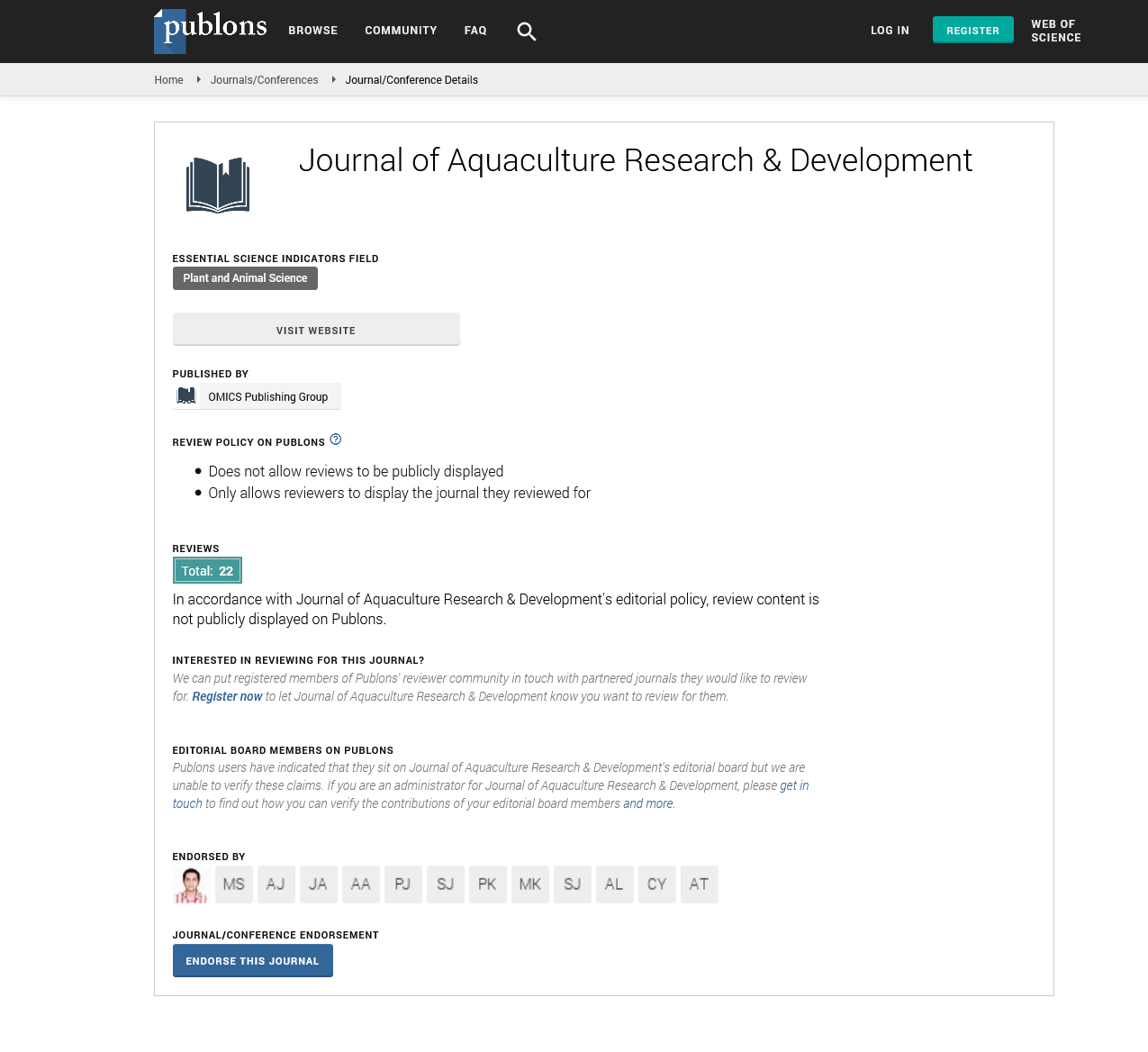Indexed In
- Online Access to Research in the Environment (OARE)
- Open J Gate
- Genamics JournalSeek
- JournalTOCs
- Scimago
- Ulrich's Periodicals Directory
- Access to Global Online Research in Agriculture (AGORA)
- Electronic Journals Library
- Centre for Agriculture and Biosciences International (CABI)
- RefSeek
- Directory of Research Journal Indexing (DRJI)
- Hamdard University
- EBSCO A-Z
- OCLC- WorldCat
- Scholarsteer
- SWB online catalog
- Virtual Library of Biology (vifabio)
- Publons
- MIAR
- University Grants Commission
- Euro Pub
- Google Scholar
Useful Links
Share This Page
Journal Flyer

Open Access Journals
- Agri and Aquaculture
- Biochemistry
- Bioinformatics & Systems Biology
- Business & Management
- Chemistry
- Clinical Sciences
- Engineering
- Food & Nutrition
- General Science
- Genetics & Molecular Biology
- Immunology & Microbiology
- Medical Sciences
- Neuroscience & Psychology
- Nursing & Health Care
- Pharmaceutical Sciences
Commentry - (2025) Volume 16, Issue 7
Sustaining Water Farms: Challenges and Opportunities in Aquatic Production
Dong Shi Go*, Manuscript No. JARD-25-30053; , Pre QC No. JARD-25-30053 (PQ); , QC No. JARD-25-30053; , Manuscript No. JARD-25-30053 (R; , DOI: 10.35248/2155-9546.25.16.1009
Description
The first intentional cultivation of fish or shellfish was exploratory and had a narrow scope. Techniques have evolved over decades, from pond farming along rivers to floating cages along the shore and today aquatic agriculture is one of the fastest-growing food sectors globally. Dependability is one attraction. A number of factors, including weather, shifting stock levels, laws and natural disturbances, affect yield variability in wild catch. When raising is managed, the operator can plan when to stock, feed, water and harvest the animal. But with such authority come obligations and possible risks.
Feed continues to be a significant limitation. For numerous aquatic species, particularly those at the top of the food chain, nutrition has traditionally relied on marine oils and proteins. As stocks of oceanic forage fish are under pressure, the cost and availability of fishmeal and fish oil deteriorate. Certain analyses now indicate that the actual consumption of wild fish to sustain aquaculture (accounting for feed chain losses) could surpass previous estimates.
Alternative sources of protein are gaining traction. Meals derived from insects, microbial biomass, single-cell protein and plant proteins are undergoing trials. Among these, insect meals derived from black soldier fly larvae have demonstrated strong growth and survival in experimental conditions.A further challenge involves waste and the quality of water. In stationary pond or cage setups, waste materials build up and deteriorate water quality. Increased ammonia, nitrite, or decreased oxygen levels can damage or eliminate aquatic life. Methods such as bio floc assist by transforming nitrogen waste into bacterial biomass that serves as additional feed.
Recirculculating systems provide increased control and reduced effluent, yet demand meticulous engineering filtration systems, oxygenation, pumps, sensors and automated controls. These systems are capable of decreasing the requirement for continuous water transfer with natural water sources, lessening adverse effects downstream.
Health management is a significant element as well. Elevated densities promote the spread of diseases. Modern management includes preventive measures like brood stock screening, routine health assessments, the use of probiotics, vaccination and selective breeding for resilience. Genetic enhancement is an area with significant potential. In coastal or offshore settings, the integrity of cages and environmental pressures create further challenges. Storms, currents, biological growth and mooring strain can lead to harm. To tackle this, new sensory networks and robotic inspection technologies are being developed. Certain systems utilize underwater drones or automated devices to identify net damage and carry out minor repairs. A new tool gaining traction is digital twin modeling. By aligning real-time sensor data with computational models, operators can track net deformation or force loads and anticipate failure before it occurs. This not only stops escapes but also enhances safety and maintenance planning.
For sustainable success, social acceptance and regulatory structures are crucial. Aquatic farms must avoid damaging native ecosystems, displacing local fishers, or degrading common water resources. Licensing, routine environmental assessments, community involvement and operational transparency are essential. Worldwide, demand is increasing. Aquaculture has surpassed wild capture in overall production volume and forecasts indicate continued expansion.
The industry must develop dietary innovation, increase energy efficiency, improve health management, fortify structural resilience, improve governance and develop capacity if it is to succeed in the long run. Aquatic farming can offer environmental balance, economic opportunity and food security in different areas when done properly. These standards are intended to align with the distinct tactics and objectives of aquaculture expansion in Tunisia while maintaining a cautious mind set.
The findings support the development of sustainable aquaculture in Tunisia and set a standard for similar Mediterranean environments, promoting peaceful cohabitation and sustainable growth in offshore fish farming. Phage therapy is still not a quick fix for disease control, despite significant progress in the isolation and characterization of phage’s used to fight aquaculture pathogens. For successful phage therapy in aquaculture, a more profound comprehension of phage-host compatibility within pathogen-specific databases is essential.

